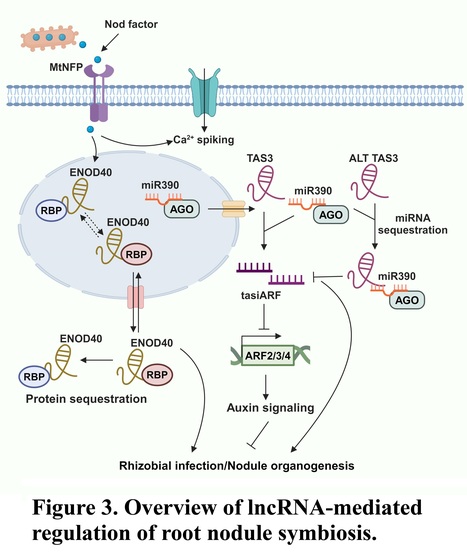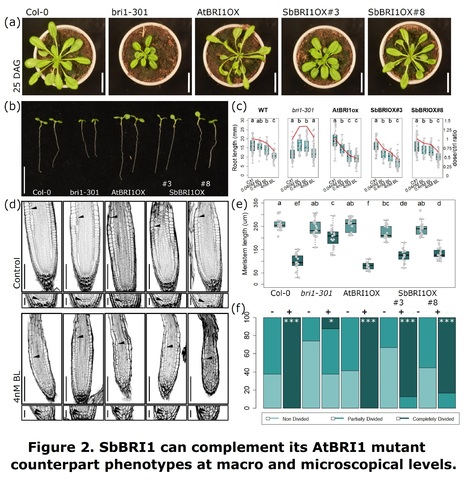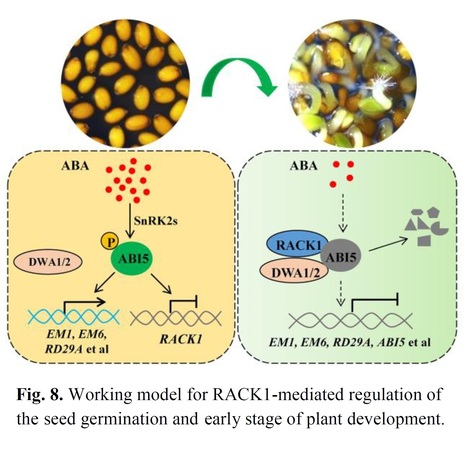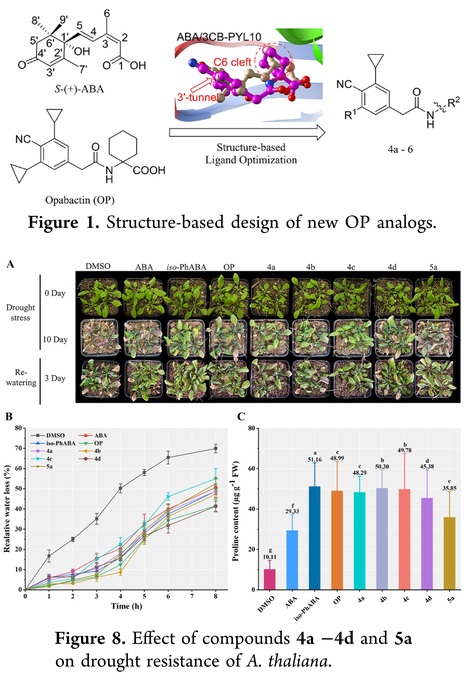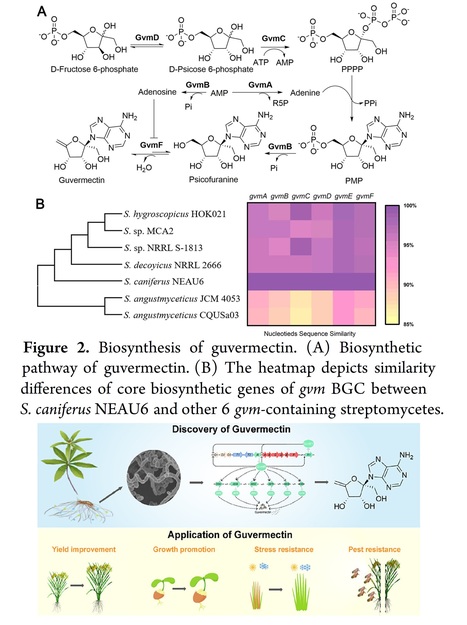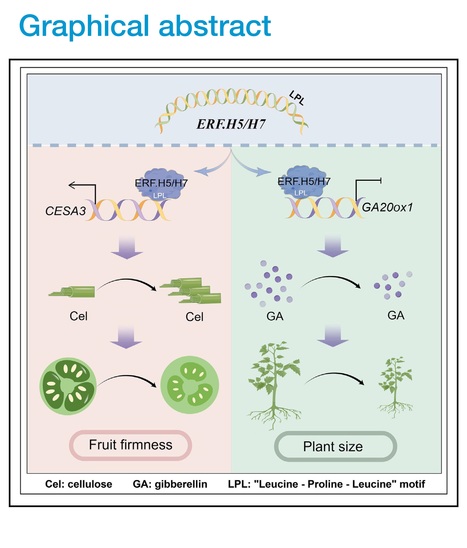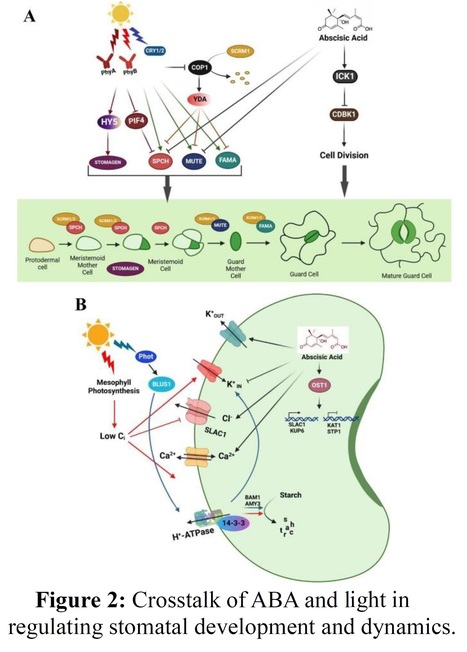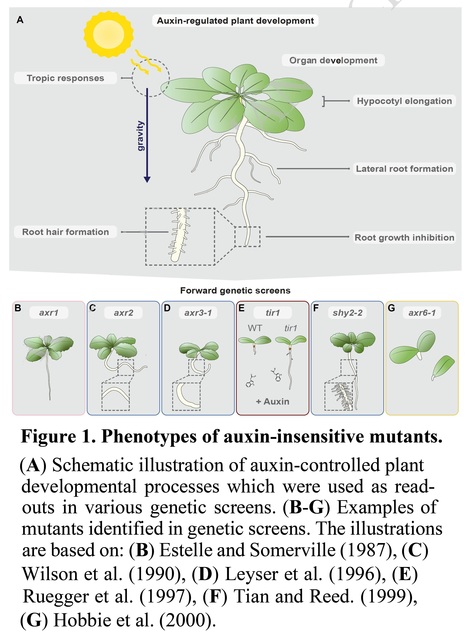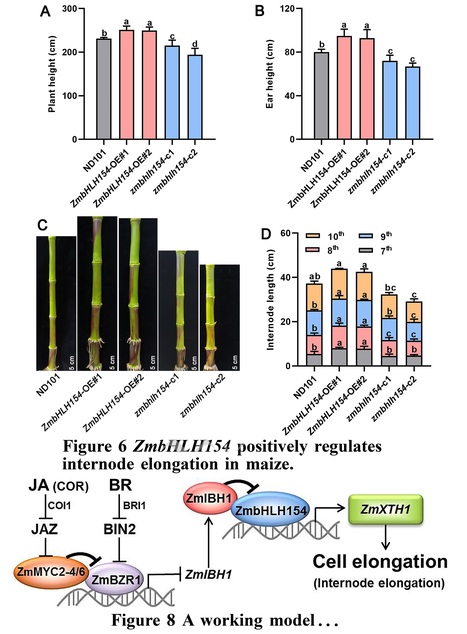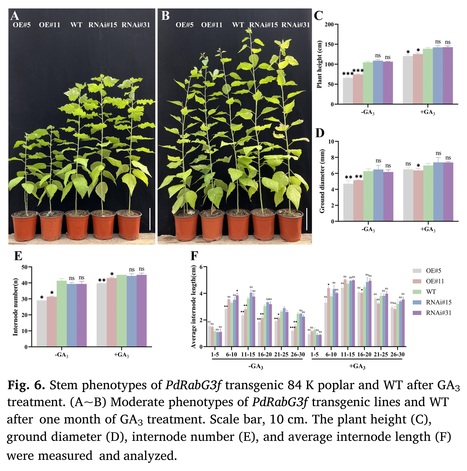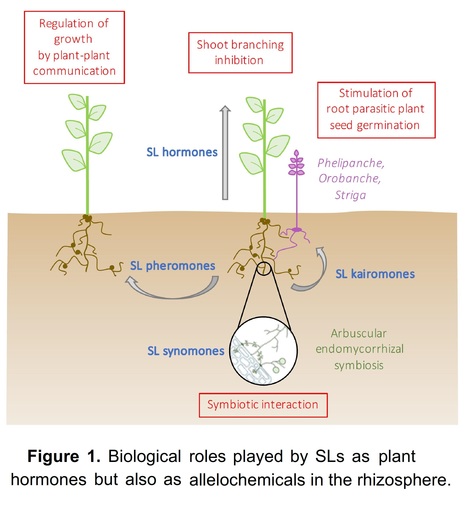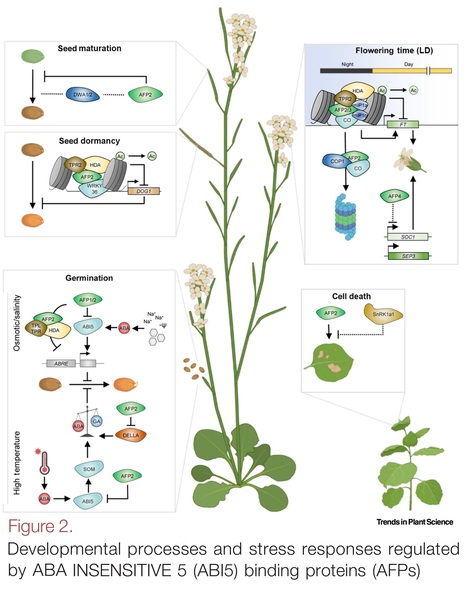 Your new post is loading...
 Your new post is loading...
Author: Daniel J. Cosgrove.
Annual Review of Plant Cell and Development (2024)
Abstract: "Expansins comprise an ancient group of cell wall proteins ubiquitous in land plants and their algal ancestors. During cell growth, they facilitate passive yielding of the wall's cellulose networks to turgor-generated tensile stresses, without evidence of enzymatic activity. Expansins are also implicated in fruit softening and other developmental processes and in adaptive responses to environmental stresses and pathogens. The major expansin families in plants include α-expansins (EXPAs), which act on cellulose-cellulose junctions, and β-expansins, which can act on xylans. EXPAs mediate acid growth, which contributes to wall enlargement by auxin and other growth agents. The genomes of diverse microbes, including many plant pathogens, also encode expansins designated expansin-like X. Expansins are proposed to disrupt noncovalent bonding between laterally aligned polysaccharides (notably cellulose), facilitating wall loosening for a variety of biological roles."
Authors: Rui Yan, Tianle Zhang, Yuan Wang, Wenxiu Wang, Rahat Sharif, Jiale Liu, Qinglong Dong, Haoan Luan, Xuemei Zhang, Han Li, Suping Guo, Guohui Qi and Peng Jia.
Plant Physiology and Biochemistry (2024)
Highlights: • Seventeen GA2-oxidase genes identified in apple clustered into four clades. • MdGA2ox7 responded to cold and salt treatments. • MdGA2ox7 was activated during light-induced anthocyanin accumulation. • MdGA2ox7 alleviated cold and salt stress damage. • MdGA2ox7 promoted anthocyanin biosynthesis.
Abstract: "Apple (Malus domestica Borkh.) is a widely cultivated fruit crop worldwide but often suffers from abiotic stresses such as salt and cold. Gibberellic acid (GA) plays a pivotal in controlling plant development, environmental adaptability, and secondary metabolism. The GA2-oxidase (GA2ox) is responsible for the deactivation of bioactive GA. In this study, seventeen GA2-oxidase genes were identified in the apple genome, and these members could be clustered into four clades based on phylogenetic relationships and conserved domain structures. MdGA2ox7 exhibited robust expression across various tissues, responded to cold and salt treatments, and was triggered in apple fruit peels via light-induced anthocyanin accumulation. Subcellular localization prediction and experiments confirmed that MdGA2ox7 was located in the cytoplasm. Overexpression of MdGA2ox7 in Arabidopsis caused a lower level of active GA and led to GA-deficient phenotypes, such as dwarfism and delayed flowering. MdGA2ox7 alleviated cold and salt stress damage in both Arabidopsis and apple in concert with melatonin (MT). Additionally, MdGA2ox7 enhanced anthocyanin biosynthesis in apple calli and activated genes involved in anthocyanin synthesis. These findings provide new insights into the functions of apple GA2ox in regulating development, stress tolerance, and secondary metabolism."
Authors: Kei Tsuzuki, Taiki Suzuki, Michio Kuruma, Kotaro Nishiyama, Ken-ichiro Hayashi, Shinya Hagihara and Yoshiya Seto.
bioRxiv (2024)
Abstract: "Root parasitic plants in the Orobancheceae, such as Striga and Orobanche, cause significant damage to crop production. The germination step of these root parasitic plants is induced by host-root-derived strigolactones (SLs). After germination, the radicles elongate toward the host and invade the host root. We have previously discovered that a simple amino acid, tryptophan (Trp), as well as its metabolite, the plant hormone indole-3-acetic acid (IAA), can inhibit radicle elongation of Orobanche minor. These results suggest that auxin plays a crucial role in the radicle elongation step in root parasitic plants. In this report, we used various auxin chemical probes to dissect the auxin function in the radicle growth of O. minor and Striga hermonthica. We found that synthetic auxins inhibited radicle elongation. In addition, auxin receptor antagonist, auxinole, rescued the inhibition of radicle growth by exogenous IAA. Moreover, a polar transport inhibitor of auxin, N-1-naphthylphthalamic acid (NPA), affected radicle tropism. We also proved that exogenously applied Trp is converted into IAA in O. minor seeds, and auxinole partly rescued this radicle elongation. Our data demonstrate a pivotal role of auxin in radicle growth. Thus, manipulation of auxin function in root parasitic plants should offer a useful approach to combat these parasites."
Authors: Lei Liang and Xiangyang Hu.
Phyton (2024)
Abstract: "With the rapid development of modern molecular biology and bioinformatics, many studies have proved that transcription factors play an important role in regulating the growth and development of plants. SPATULA (SPT) belongs to the bHLH transcription family and participates in many processes of regulating plant growth and development. This review systemically summarizes the multiple roles of SPT in plant growth, development, and stress response, including seed germination, flowering, leaf size, carpel development, and root elongation, which is helpful for us to better understand the functions of SPT."
Authors: Muhammad Fahad, Leeza Tariq, Sajid Muhammad and Liang Wu.
Plant Communications (2024)
Abstract: "Long non-coding RNAs (lncRNAs) have emerged as integral gene expression regulators underlying plant growth, development, and adaptation. To adapt to the heterogeneous and dynamic rhizosphere, plants use interconnected regulatory mechanisms to optimally fine-tune gene expression governing interactions with soil biota, nutrient acquisition, and heavy metal tolerance. Recently, high-throughput sequencing has enabled the identification of plant lncRNAs responsive to rhizosphere biotic and abiotic cues. Here, we examine lncRNA biogenesis, classification, and mode of action, highlighting the functions of lncRNAs in mediating plant adaptation to diverse rhizosphere factors. We then discuss studies that revealed lncRNA significance and target genes during developmental plasticity and stress responses at the rhizobium interface. Thus, a comprehensive understanding of specific lncRNAs, their regulatory targets, and the intricacies of their functional interaction networks will provide crucial insights into how these transcriptomic switches fine-tune responses to shifting rhizosphere signals. As we look ahead, we foresee that single-cell dissection of cell type-specific lncRNA regulatory dynamics will enhance our understanding of precise developmental modulation mechanisms enabling plant rhizosphere adaptation. Overcoming future challenges through multi-omics and genetic approaches will better reveal the integral lncRNA roles governing plant adaptation to the belowground environment."
Authors: Andrés Rico-Medina, David Blasco-Escámez, Juan B. Fontanet-Manzaneque, Natalie Laibach, Fidel Lozano-Elena, Damiano Martignago and Ana I. Caño-Delgado.
bioRxiv (2024)
Abstract: "- The high sequence and structural similarities between BRI1 brassinosteroid receptors of Arabidopsis (AtBRI1) and sorghum (SbBRI1) prompted us to study the functionally conserved roles of BRI in both organisms. - Introducing sorghum SbBRI1 in Arabidopsis bri1 mutants restores defective growth and developmental phenotypes to WT levels. - Sorghum mutants for SbBRI1 receptors show defective BR sensitivity and impaired growth and development throughout the entire sorghum life cycle. Embryonic analysis of sorghum primary roots permit to trace back root growth and development to early stages, revealing the functionally conserved roles of SbBRI1 receptor in BR perception during meristem development. RNA-seq analysis uncovers the downstream regulation of the SbBRI1 pathway in cell wall biogenesis during cell growth. - Together, these results uncover that sorghum SbBRI1 receptor protein play functionally conserved roles in plant growth and development, while encourage the study of BR pathways in sorghum and its implications for improving resilience in cereal crops."
Authors: Yordan J. Romero-Contreras, Francisco González-Serrano, Elena Bello-López, Damien Formey, Wendy Aragón, Miguel Ángel Cevallos, Eria A. Rebollar and Mario Serrano.
Plant Molecular Biology (2024)
Abstract: "Plants and microorganisms establish beneficial associations that can improve their development and growth. Recently, it has been demonstrated that bacteria isolated from the skin of amphibians can contribute to plant growth and defense. However, the molecular mechanisms involved in the beneficial effect for the host are still unclear. In this work, we explored whether bacteria isolated from three tropical frogs species can contribute to plant growth. After a wide screening, we identified three bacterial strains with high biostimulant potential, capable of modifying the root structure of Arabidopsis thaliana plants. In addition, applying individual bacterial cultures to Solanum lycopersicum plants induced an increase in their growth. To understand the effect that these microorganisms have over the host plant, we analysed the transcriptomic profile of A. thaliana during the interaction with the C32I bacterium, demonstrating that the presence of the bacteria elicits a transcriptional response associated to plant hormone biosynthesis. Our results show that amphibian skin bacteria can function as biostimulants to improve agricultural crops growth and development by modifying the plant transcriptomic responses."
Via Jean-Michel Ané
Authors: Zhiyong Li, Dayan Zhang, Xiaoju Liang and Jiansheng Liang.
Journal of Experimental Botany (2024)
Abstract: "ABSCISIC ACID (ABA) INSENSITIVE5 (ABI5), the key regulator of abscisic acid (ABA) signaling pathway, plays a fundamental role in seed germination and postgerminative development. However, the detailed molecular mechanism underlying the repression function of ABI5 in these processes remains to be elucidated. In this study, we demonstrate that the conserved eukaryotic WD40 repeat protein RACK1 is a novel negative regulator of ABI5 in Arabidopsis. The RACK1 loss-of-function mutant is hypersensitive to ABA, while this phenotype was rescued by the mutation of ABI5. Moreover, overexpression of RACK1 suppresses ABI5 transcriptional activation activity for ABI5-targeted genes. RACK1 could also physically interact with ABI5 and facilitate its degradation. Furthermore, we found that RACK1 and the two substrate receptors for CUL4-based E3 ligases (DWA1 and DWA2) function together to mediate the turnover of ABI5, thereby efficiently turning down ABA signaling for seed germination and postgerminative growth. On the other hand, a series of molecular analyses demonstrated that ABI5 could bind with the promoter of RACK1 to repress its expression. Collectively, our findings suggest that RACK1 and ABI5 might form a feedback loop to regulate the homeostasis of ABA signaling for acute seed germination and early plant development."
Authors: Lining Liu, Xing Liu, Zhenkun Bai, Mohsin Tanveer, Yujing Zhang, Wenjie Chen, Sergey Shabala and Liping Huang.
Plant Science (2024)
Highlights: • Rapid alkalinization factor (RALF) peptides modulate pH of the extracellular matrix in plant cells. • RALFs play key role in plant growth and development. • RALFs are important regulators in plant intercellular communications, integrating various environmental cues. • Important role of RALFs as component of abiotic stress tolerance mechanisms has emerged.
Abstract: "Plants live in a highly dynamic environment and require to rapidly respond to a plethora of environmental stimuli, so that to maintain their optimal growth and development. A small plant peptide, rapid alkalization factor (RALF), can rapidly increase the pH value of the extracellular matrix in plant cells. RALFs always function with its corresponding receptors. Mechanistically, effective amount of RALF is induced and released at the critical period of plant growth and development or under different external environmental factors. Recent studies also highlighted the role of RALF peptides as important regulators in plant intercellular communications, as well as their operation in signal perception and as ligands for different receptor kinases on the surface of the plasma membrane, to integrate various environmental cues. In this context, understanding the fine-print of above processes may be essential to solve the problems of crop adaptation to various harsh environments under current climate trends scenarios, by genetic means. This paper summarizes the current knowledge about the structure and diversity of RALF peptides and their roles in plant development and response to stresses, highlighting unanswered questions and problems to be solved."
Authors: Xianjun Tang, Minghui Chen, Xiaobin Li, Xueqin Zhang*, Ping Wang, Yanjun Xu, Jiaqi Li and Zhaohai Qin.
Journal of Agricultural and Food Chemistry (2024)
Abstract: "Abscisic acid (ABA), a phytohormone, and its analogs have been found to enhance plant resistance to various biotic and abiotic stresses, particularly drought, by activating the ABA signaling pathway. This study used a combination of structure-directed design and molecular docking screening methods to synthesize a novel series of opabactin (OP) analogs. Among them, compounds 4a–4d and 5a showed comparable or superior activity to OP in bioassays, including seed germination and seedling growth inhibition in A. thaliana and rice, stomatal closure, and drought resistance in wheat and soybean. Further transcriptome analysis revealed distinct mechanisms of action between compound 4c and iso-PhABA in enhancing drought tolerance in A. thaliana. These findings highlight the application prospect of 4c and its analogs in agricultural cultivation, particularly in drought resistance. Additionally, they provide new insights into the mechanisms by which different ABA receptor agonists enhance drought resistance."
Authors: Chongxi Liu, Manman Zhang, Lei Li, Xiangjing Wang, Shanshan Li and Wensheng Xiang.
Journal of Agricultural and Food Chemistry (2024)
Abstract: "Plant growth regulators (PGRs) play an important role in alleviating the detrimental effects of biotic and abiotic stress and improving crop yield and quality. As a novel PGR from Streptomyces registered in 2021, guvermectin (GV) has the potential to improve plant yield and defense, making its application in agriculture a subject of interest. Here, we describe the discovery process, functional activities, agricultural applications, toxicity, environmental safety, and biosynthetic mechanism of GV. This Perspective provides a guide for the development of novel PGRs from microorganisms."
Authors: Xiaofang Li, Xin Zheng, Nikita Yadav, Shouvik Saha, El-Sayed Salama, Xiangkai Li, Likun Wang and Byong-Hun Jeon.
Plant Communications (2024)
Abstract: The Green Revolution of the mid-20th century transformed agriculture worldwide and has resulted in environmental challenges. A new approach, the Second Green Revolution, seeks to enhance agricultural productivity while minimizing negative environmental impacts. Plant microbiomes play critical roles in plant growth and stress responses, and understanding plant–microbiome interactions is essential for developing sustainable agricultural practices that meet food security and safety challenges, which are among the United Nations Sustainable Development Goals. This review provides a comprehensive exploration of key deterministic processes crucial for developing microbiome management strategies, including the host effect, the facilitator effect, and microbe–microbe interactions. A hierarchical framework for plant microbiome modulation is proposed to bridge the gap between basic research and agricultural applications. This framework emphasizes three levels of modulation: single-strain, synthetic community, and in situ microbiome modulation. Overall, rational management of plant microbiomes has wide-ranging applications in agriculture and can potentially be a core technology for the Second Green Revolution."
Authors: Yangang Pei, Qihan Xue, Peng Shu, Weijie Xu, Xiaofei Du, Mengbo Wu, Kaidong Liu, Julien Pirrello, Mondher Bouzayen, Yiguo Hong and Mingchun Liu.
Developmental Cell (2024)
Editor's view: Pei et al. demonstrate the role of bifunctional transcription factors SlERF.H5 and SlERF.H7 in activating the cellulose biosynthesis gene SlCESA3 while repressing the gibberellin biosynthesis gene GA20ox1. The study highlights the distinct transcriptional regulatory functions of these ERFs in promoting cell wall formation and inhibiting plant growth.
Highlights • Cellulose is required for cell wall formation and firmness maintenance of fruits • SlERF.H5 and SlERF.H7 act as both transcriptional activators and repressors • The regulatory activity of SlERF.H5 and SlERF.H7 is mediated by a conserved motif
Abstract: "The plant cell wall is a dynamic structure that plays an essential role in development, but the mechanism regulating cell wall formation remains poorly understood. We demonstrate that two transcription factors, SlERF.H5 and SlERF.H7, control cell wall formation and tomato fruit firmness in an additive manner. Knockout of SlERF.H5, SlERF.H7, or both genes decreased cell wall thickness, firmness, and cellulose contents in fruits during early development, especially in double-knockout lines. Overexpressing either gene resulted in thicker cell walls and greater fruit firmness with elevated cellulose levels in fruits but severely dwarf plants with lower gibberellin contents. We further identified that SlERF.H5 and SlERF.H7 activate the cellulose biosynthesis gene SlCESA3 but repress the gibberellin biosynthesis gene GA20ox1. Moreover, we identified a conserved LPL motif in these ERFs responsible for their activities as transcriptional activators and repressors, providing insight into how bifunctional transcription factors modulate distinct developmental processes."
|
Authors: Feimei Guo, Minghui Lv, Jingjie Zhang and Jia Li.
Plant and Cell Physiology (2024)
Abstract: "Brassinosteroids (BRs) are a group of polyhydroxylated phytosterols that play essential roles in regulating plant growth and development as well as stress adaptation. It is worth noting that BRs do not function alone, but rather they crosstalk with other endogenous signaling molecules, including the phytohormones auxin, cytokinins (CKs), gibberellins (GAs), abscisic acid (ABA), ethylene (ET), jasmonates (JAs), salicylic acid (SA), and strigolactones (SLs), forming elaborate signaling networks to modulate plant growth and development. BRs interact with other phytohormones mainly by regulating each others’ homeostasis, transport, or signaling pathway at the transcriptional and posttranslational levels. In this review, we focus our attention on current research progress in BR signal transduction and the crosstalk between BRs and other phytohormones."
Authors: Bihai Shi, Amelia Felipo-Benavent, Guillaume Cerutti, Carlos Galvan-Ampudia, Lucas Jilli, Geraldine Brunoud, Jérome Mutterer, Elody Vallet, Lali Sakvarelidze-Achard, Jean-Michel Davière, Alejandro Navarro-Galiano, Ankit Walia, Shani Lazary, Jonathan Legrand, Roy Weinstain, Alexander M. Jones, Salomé Prat, Patrick Achard and Teva Vernoux.
Nature Communications (2024)
Editor's view: Engineering of a biosensor allows the authors to map the signaling activity of the phytohormones gibberellins (GAs) and to show that GAs orient cell division at the shoot apex to establish the organization in parallel cell files of plant stems.
Abstract: "Growth at the shoot apical meristem (SAM) is essential for shoot architecture construction. The phytohormones gibberellins (GA) play a pivotal role in coordinating plant growth, but their role in the SAM remains mostly unknown. Here, we developed a ratiometric GA signaling biosensor by engineering one of the DELLA proteins, to suppress its master regulatory function in GA transcriptional responses while preserving its degradation upon GA sensing. We demonstrate that this degradation-based biosensor accurately reports on cellular changes in GA levels and perception during development. We used this biosensor to map GA signaling activity in the SAM. We show that high GA signaling is found primarily in cells located between organ primordia that are the precursors of internodes. By gain- and loss-of-function approaches, we further demonstrate that GAs regulate cell division plane orientation to establish the typical cellular organization of internodes, thus contributing to internode specification in the SAM."
Authors: Hongjiao Jiang, Lijun Xie, Zhiqun Gu, Hongyao Mei, Haohao Wang, Jing Zhang, Minmin Wang, Yiteng Xu, Chuanen Zhou and Lu Han.
The Plant Journal (2024)
Significance Statement: Auxins play important roles in various aspects of plant growth and development. In Medicago truncatula, orthologs of PIN1-mediated auxin transportation are involved in various developmental processes and amino acid biosynthesis and metabolism in seeds, which offers insights into the molecular mechanisms governing seed size regulation in crops.
Abstract: "The regulation of seed development is critical for determining crop yield. Auxins are vital phytohormones that play roles in various aspects of plant growth and development. However, its role in amino acid biosynthesis and metabolism in seeds is not fully understood. In this study, we identified a mutant with small seeds through forward genetic screening in Medicago truncatula. The mutated gene encodes MtPIN4, an ortholog of PIN1. Using molecular approaches and integrative omics analyses, we discovered that auxin and amino acid content significantly decreased in mtpin4 seeds, highlighting the role of MtPIN4-mediated auxin distribution in amino acid biosynthesis and metabolism. Furthermore, genetic analysis revealed that the three orthologs of PIN1 have specific and overlapping functions in various developmental processes in M. truncatula. Our findings emphasize the significance of MtPIN4 in seed development and offer insights into the molecular mechanisms governing the regulation of seed size in crops. This knowledge could be applied to enhance crop quality by targeted manipulation of seed protein regulatory pathways."
Authors: Shammi Akter, Oscar Castaneda-Méndez and Jesús Beltrán
Current Opinion in Biotechnology (2024)
Highlights • Several challenges remain for the widespread use of synthetic biology in crops. • Synthetic gene expression circuitry is advancing in model plants. • Rapid enzyme discovery and testing are needed for plant metabolic engineering.
Abstract: "Plant synthetic biology (Plant SynBio) is an emerging field with the potential to enhance agriculture, human health, and sustainability. Integrating genetic tools and engineering principles, Plant SynBio aims to manipulate cellular functions and construct novel biochemical pathways to develop plants with new phenotypic traits, enhanced yield, and be able to produce natural products and pharmaceuticals. This review compiles research efforts in reprogramming plant developmental and biochemical pathways. We highlight studies leveraging new gene expression toolkits to alter plant architecture for improved performance in model and crop systems and to produce useful metabolites in plant tissues. Furthermore, we provide insights into the challenges and opportunities associated with the adoption of Plant SynBio in addressing complex issues impacting agriculture and human health."
Authors: Kalyan Mahapatra, Shubhi Dwivedi, Arpan Mukherjee, Ajar Anupam Pradhan, Kavuri Venkateswara Rao, Deeksha Singh, Lavanya Bhagavatula and Sourav Datta.
Journal of Experimental Botany (2024)
Abstract: "The exogenous light cues and the phytohormone Abscisic acid (ABA) regulate several aspects of plant growth and development. In recent years, the role of the crosstalk between the light and ABA signaling pathways in regulating different physiological processes has become increasingly evident. This includes the regulation of germination and early seedling development, control of stomatal development and conductance, growth and development of roots, buds, branches, and regulation of flowering. Light and ABA signaling cascades have various convergence points at both DNA and protein levels. The molecular crosstalk involves several light signaling factors like HY5, COP1, PIFs and BBXs that integrate with ABA signaling components like the PYL receptors and ABI5. Especially, ABI5 and PIF4 promoters serve as key “hotspots” for the integration of these two pathways. Plants acquired both light and ABA signaling pathways before they colonized land almost 500 million years ago. In this review, we discuss the recent advances in the interplay of light and ABA signaling regulating plant development and provide an overview of the evolution of these two pathways."
Authors: Martijn de Roij, Jan Willem Borst and Dolf Weijers.
The Plant Cell (2024)
One-sentence summary: The authors review the deeply intertwined roles of proteolytic regulation in the auxin response.
Abstract: "The signaling molecule auxin sits at the nexus of plant biology and coordinates essentially all growth and developmental processes in plants. Auxin molecules are transported throughout plant tissues and are capable of evoking highly specific physiological responses in plant cells by inducing various molecular pathways. In many of these pathways, proteolysis plays a crucial role for correct physiological responses. This review provides a chronology of the discovery and characterisation of the auxin receptor, which is a fascinating example of separate research trajectories ultimately converging on the discovery of a core auxin signaling hub which relies on degradation of a family of transcriptional inhibitor proteins – the Aux/IAAs. Beyond describing the “classical” proteolysis-driven auxin response system, we explore more recent examples of the interconnection of proteolytic systems, which target a range of other auxin signaling proteins, and auxin response. By highlighting these emerging concepts, we provide potential future directions to further investigate the role of protein degradation within the framework of auxin response."
Authors: Xing Wang, Zhaobin Ren, Shipeng Xie, Zhaohu Li, Yuyi Zhou and Liusheng Duan.
Plant Physiology (2024)
One-sentence summary: A jasmonate mimic regulates a basic helix-loop-helix network by attenuating brassinosteroid signaling, which represses expression of a cell wall–related gene and inhibits internode elongation in maize.
Abstract: "Lodging restricts growth, development, and yield formation in maize (Zea mays L.). Shorter internode length is beneficial for lodging tolerance. However, although brassinosteroids (BRs) and jasmonic acid (JA) are known to antagonistically regulate internode growth, the underlying molecular mechanism is still unclear. In this study, application of the JA mimic coronatine (COR) inhibited basal internode elongation at the jointing stage and repressed expression of the cell wall-related gene XYLOGLUCAN ENDOTRANSGLUCOSYLASE/HYDROLASE 1 (ZmXTH1), whose overexpression in maize plants promotes internode elongation. We demonstrated that the basic helix–loop–helix (bHLH) transcription factor ZmbHLH154 binds directly to the ZmXTH1 promoter and induces its expression, whereas the bHLH transcription factor ILI1 BINDING BHLH 1 (ZmIBH1) inhibits this transcriptional activation by forming a heterodimer with ZmbHLH154. Overexpressing ZmbHLH154 led to longer internodes, whereas zmbhlh154 mutants had shorter internodes than the wild type. The core JA-dependent transcription factors ZmMYC2-4 and ZmMYC2-6 interacted with BRASSINAZOLE RESISTANT 1 (ZmBZR1), a key factor in BR signaling, and these interactions eliminated the inhibitory effect of ZmBZR1 on its downstream gene ZmIBH1. Collectively, these results reveal a signaling module in which JA regulates a bHLH network by attenuating BR signaling to inhibit ZmXTH1 expression, thereby regulating cell elongation in maize."
Authors: Jiujun Du, Hantian Wei, Xueqin Song, Lei Zhang and Jianjun Hu.
Plant Science (2024)
Highlights: • PdRabG3f inhibited the vertical elongation of poplar by suppressing internode elongation. • PdRabG3f inhibited xylem development by suppressing cambium division and differentiation. • PdRabG3f interfered with gibberellin-mediated internode elongation and xylem developing in poplar.
Abstract: "As a member of the small GTPases family, Rab GTPases play a key role in specifying transport pathways in the intracellular membrane trafficking system and are involved in plant growth and development. By quantitative trait locus (QTL) mapping, PdRabG3f was identified as a candidate gene associated with shoot height in a hybrid offspring of Populus deltoides ‘Danhong’ × Populus simonii ‘Tongliao1’. PdRabG3f localized to the nucleus, endoplasmic reticulum and tonoplast and was primarily expressed in the xylem and cambium. Overexpression of PdRabG3f in Populus alba × Populus glandulosa (84 K poplar) had inhibitory effects on vertical and radical growth. In the transgenic lines, there were evident changes in the levels of 15 gibberellin (GA) derivatives, and the application of exogenous GA3 partially restored the phenotypes mediated by GAs deficiency. The interaction between PdRabG3f and RIC4, which was the GA-responsive factor, provided additional explanation for PdRabG3f's inhibitory effect on poplar growth. RNA-seq analysis revealed differentially expressed genes (DEGs) associated with cell wall, xylem, and gibberellin response. PdRabG3f interfering endogenous GAs levels in poplar might involve the participation of MYBs and ultimately affected internode elongation and xylem development. This study provides a potential mechanism for gibberellin-mediated regulation of plant growth through Rab GTPases."
Authors: Suzanne Daignan Fornier, Antoinette Keita and François-Didier Boyer.
ChemBioChem (2024)
Abstract: "Today, the use of artificial pesticides is questionable and the adaptation to global warming is a necessity. The promotion of favorable natural interactions in the rhizosphere offers interesting perspectives for changing the type of agriculture. Strigolactones (SLs), the latest class of phytohormones to be discovered, are also chemical mediators in the rhizosphere. We present in this review the diversity of natural SLs, their analogs, mimics, and probes essential for the biological studies of this class of compounds. Their biosynthesis and access by organic synthesis are highlighted especially concerning noncanonical SLs, the more recently discovered natural SLs. Organic synthesis of analogs, stable isotope-labeled standards, mimics, and probes are also reviewed here. In the last part, the knowledge about the SL perception is described as well as the different inhibitors of SL receptors that have been developed."
Authors: Grace A. Johnston, Hannah M. Berry, Mikiko Kojima, Hitoshi Sakakibara and Cristiana T. Argueso.
bioRxiv (2024)
Abstract: "Plant immunity activation often results in suppression of plant growth, particularly in the case of constitutive immune activation. We discovered that signaling of the phytohormone cytokinin (CK), known to regulate plant growth through the control of cell division and shoot apical meristem (SAM) activity, can be suppressed by negative crosstalk with the defense phytohormones jasmonic acid (JA), and most evidently, salicylic acid (SA). We show that changing the negative crosstalk of SA on CK signaling in autoimmunity mutants by targeted increase of endogenous CK levels results in plants resistant to pathogens from diverse lifestyles, and relieves suppression of reproductive growth. Moreover, such changes in crosstalk result in a novel reproductive growth phenotype, suggesting a role for defense phytohormones in the SAM, likely through regulation of nitrogen response and cellular redox status. Our data suggest that targeted phytohormone crosstalk engineering can be used to achieve increased reproductive growth and pathogen resistance."
Authors: Ylenia Vittozzi, Thorben Krüger, Adity Majee, Guillaume Née and Stephan Wenkel.
Trends in Plant Science (2024)
Highlights: The involvement of the ABA INSENSITIVE 5 (ABI5) binding protein family (AFPs), closely related to NOVEL INTERACTOR OF JAZ (NINJA) proteins, has been revealed in several aspects of plant development related to multifaceted plant abscisic acid (ABA) responses. The abundance of AFP proteins is tightly regulated, and they function as a rheostat for ABA responses through several nonmutually exclusive molecular mechanisms. AFP proteins regulate important biological processes in plants, which are tightly controlled by transcriptional repressors and phytohormone-mediated pathways, specifically ABA, gibberellic acid (GA), and jasmonic acid. In today's world, the most pressing concerns are food security and dynamic climatic conditions. Enriching our knowledge regarding plants’ survival and growth strategies through addressing the inherent voids in plant AFP research might foster improvements in various crop species through genetic manipulation.
Abstract: "During the course of terrestrial evolution, plants have developed complex networks that involve the coordination of phytohormone signalling pathways in order to adapt to an ever-changing environment. Transcription factors coordinate these responses by engaging in different protein complexes and exerting both positive and negative effects. ABA INSENSITIVE 5 (ABI5) binding proteins (AFPs), which are closely related to NOVEL INTERACTOR OF JAZ (NINJA)-like proteins, are known for their fundamental role in plants’ morphological and physiological growth. Recent studies have shown that AFPs regulate several hormone-signalling pathways, including abscisic acid (ABA) and gibberellic acid (GA). Here, we review the genetic control of AFPs and their crosstalk with plant hormone signalling, and discuss the contributions of AFPs to plants’ growth and development."
Authors: Connor Tansley, Nicola J. Patron, and Sarah Guiziou
ACS Synthetic Biology (2024)
Abstract: "Many plant species are grown to enable access to specific organs or tissues, such as seeds, fruits, or stems. In some cases, a value is associated with a molecule that accumulates in a single type of cell. Domestication and subsequent breeding have often increased the yields of these target products by increasing the size, number, and quality of harvested organs and tissues but also via changes to overall plant growth architecture to suit large-scale cultivation. Many of the mutations that underlie these changes have been identified in key regulators of cellular identity and function. As key determinants of yield, these regulators are key targets for synthetic biology approaches to engineer new forms and functions. However, our understanding of many plant developmental programs and cell-type specific functions is still incomplete. In this Perspective, we discuss how advances in cellular genomics together with synthetic biology tools such as biosensors and DNA-recording devices are advancing our understanding of cell-specific programs and cell fates. We then discuss advances and emerging opportunities for cell-type-specific engineering to optimize plant morphology, responses to the environment, and the production of valuable compounds."
|



 Your new post is loading...
Your new post is loading...




